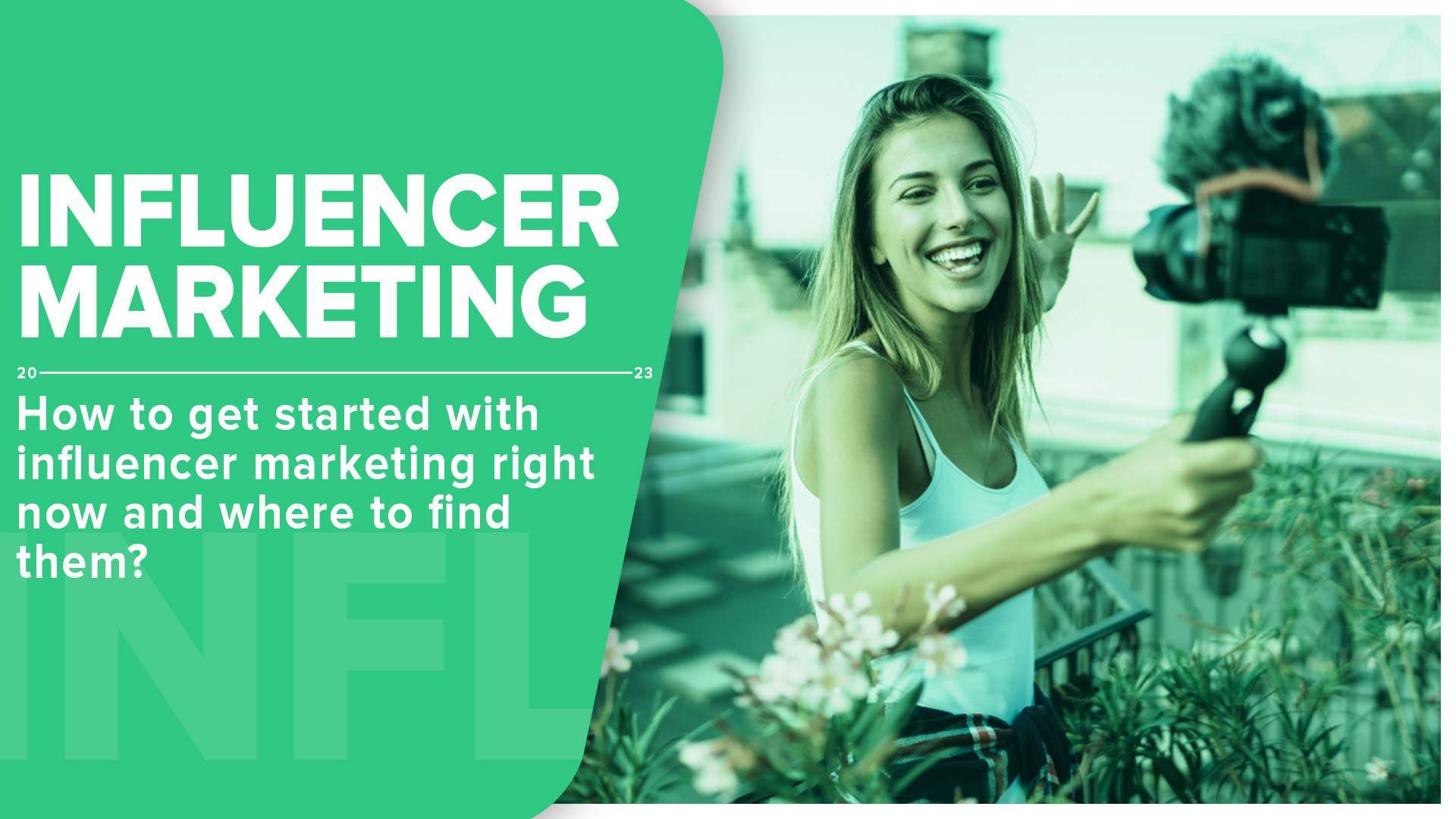
To develop a successful online e-commerce store, you must jump on the influencer marketing bandwagon! It’s essential for creating a bridge between your products and potential customers, allowing them to get in touch with your brand message through someone they trust. Influencer marketing has quickly become one of the most popular and effective ways to grow an e-commerce business online.
From breakthroughs in targeted ads and video content to new collaborations with top social media personalities, the power of influence is no longer limited to traditional celebrities. Whether your goals include increasing brand awareness, launching a product campaign, or simply boosting sales, engaging influencers can be a great way to achieve them quickly. But where do you start? That’s what this blog post aims to answer!
With tips on how best to identify and connect with possible partners in addition to creative strategies for getting results, we’ll help guide you through setting up your successful influencer marketing program today. So strap on your seatbelt – let’s jump into everything you need to know!
Influencer Marketing
What is Influencer Marketing?
Influencer marketing is a type of marketing that works by leveraging the influence and reach of notable individuals to drive product awareness and reach an established audience. Influencers are typically social media personalities or industry experts who have already established relationships with their followers.
It’s no surprise that, according to Insider Intelligence, this industry was worth $8 billion in 2019 and is set to grow to a staggering $15 billion by 2023. An influencer can be someone with 1K followers or someone with millions – anyone who can affect opinion among their peers or connected networks. Influencer marketing focuses on leveraging the influence of individuals who have established credibility and reach in a specific niche.
This niche can be anything from food, makeup, parenting, and lifestyle to gaming, music, travel, and health. Accordingly, influencers can target audiences within specific niches. For example, a food critic may gain an enormous online following devoted to restaurant reviews, while a mommy blogger may create targeted content for parents or carers.
An influencer’s job is to create content highlighting a product/service they believe in; this type of content often takes the form of reviews, tutorials, personal essays, videos, and demonstrations, enabling brands to promote their product naturally and authentically. The goal here isn’t one-way communication —- it’s not just about pushing out sales messages —- but it’s about brands connecting directly with their target audience, which can create true believers for the brand message.
Benefits of Influencer Marketing for Small Businesses
Influencer marketing has become an essential tool for small businesses. Not only is it cost-effective and simple, but using influencers offers many additional benefits to those willing to take the plunge. What’s more, according to recent statistics, the worldwide popularity of influencer marketing is growing at an exponential rate. In fact, by 2025 the global market size is estimated to reach 22.2 billion U.S. dollars. That’s more than double what was recorded in 2020 (9.7 billion U.S. dollars) — a trend that suggests influencer marketing is here to stay.
By tapping into influencer networks, it’s possible to create brand awareness and drive engagement faster than traditional methodologies such as email campaigns or SEO optimization alone. Influencer partnerships can boost credibility and trust among potential customers since influencers often act as positive role models who share personal tips and review products.
Moreover, influencer marketing benefits brands in reaching target audiences in improbable places, including messages sent across social media channels worldwide. Gone are the days when small businesses had limited resources for marketing — through influencers, businesses can achieve meaningful results on any budget.
Influencer Marketing Vs. Brand Ambassador
Both brand ambassadors and influencers are powerful tools when it comes to building a brand and driving marketing efforts. A brand ambassador is a person employed by or affiliated with the company who promotes the product directly and authentically via word-of-mouth.
On the other hand, an influencer is an individual who has a large following on social media and is influential in representing particular products or brands. They act as advocates of your product or service to their established audience, typically through creating sponsored posts or product reviews. In comparison, brand ambassadors offer more authenticity to their fans, while influencers have a larger reach in numbers.
Small businesses should consider leveraging both types of individuals separately to promote their products better. They can work with a few loyal brand ambassadors for tasks that require exclusivity and trustworthiness, whereas they can tap into the network of potential followers provided by influencers. On the other hand, content created by either brand ambassadors or influencers could be leveraged as user-generated content to promote brand in other marketing campaigns.
Types of Influencers
Mega Influencers
Mega influencers are those big names with hundreds of thousands (if not millions) of followers on their social media accounts. This can include well-known public figures, celebrities, and media stars, but many mega influencers specializing in travel, fashion, or beauty have also become popular in recent years.
These influencers typically have extensive digital reach potential and cohesive visual themes across their channels so brands can be sure their message will stand out to a vast audience. If you’re considering representing your e-commerce business with a mega influencer, ensuring they authentically fit your brand’s message and voice is important. Their content should bring value beyond the initial transaction and allow them to share exciting stories that capture the hearts and attention of the modern consumer.
While mega influencers can be very appealing to marketers due to their huge following, it also presents its downsides. Though they have millions of followers, the audience isn’t targeted, making it harder for brands to effectively reach their target demographic. Additionally, such a wide reach can be costly for brands and the amount spent on one mega influencer may not deliver the same success as a micro-influencer marketing campaign. Micro-influencers are more cost-effective, provide higher engagement rates and offer more authentic content that resonates with followers in a special way.
Macro Influencers
Macro influencers are a type of influencers with in-between numbers of followers compared to their micro and mega peers. Macro influencers usually have anywhere between 700,000 to one million faithful followers, making them the mid-tier relative to the table. Over 80% of the time, they have far smaller followings than their celebrity counterparts in the form of mega influencers.
However, marketers often prefer to partner with macro influencers because they can provide more targeted reach thanks to their hyper-focused expertise within niche markets. Furthermore, you get more for your money as mega influencers often charge higher rates despite less engaging audience types. If done right, macro influencer partnerships can seriously boost brands significantly for a fraction of what their larger rivals would cost.
Micro-Influencers
Micro-influencers, or content creators with less than 100,000 followers, are rapidly gaining traction in influencer marketing for ecommerce. While independent from macro-influencers with million-plus followers and mega influencers with hundred-thousand to million followers, micro-influencers offer unique brand value. Their smaller following often gives them more intimate relationships with their audience, leading to higher engagement rates on sponsored posts when compared to larger influencers.
This engagement can drive quality conversions for brands that nurture customer relationships rather than mass-scale campaigns. Micro-influencer content also stands out from consistent aesthetics of macro- and mega-influencer posts as they often provide more nuanced insights into trends that only someone embedded in the social cycle can pick up on.
Nano Influencers
Nano influencers are a relatively new form of influencer, quickly growing in popularity. They’re defined as having between 1,000 to 10,000 followers, and their reach is very targeted. Unlike massive macro-influencers with tens or hundreds of thousands of followers with various interests, nano-influencers tend to be specialists in certain niches. This allows them to provide more detailed information on areas their followers are passionate about.
For instance, one nano influencer may specialize in lifestyle topics such as beauty trends, while another may focus on fashion. A more niche area of influence might include a bookworm who posts reviews and recommendations of classic literature or a passionate athlete who regularly tries impactful exercises shares them with their online followers. Specific examples of nano influencers include a survival expert sharing practical advice for surviving in North Scandinavian forests for more than three months or a keto diet blogger sharing nutritious food recipes she has tried herself.
These influencers also typically have high engagement rates with their followers making them attractive to brands looking for authentic connections with people who truly appreciate their messaging. Companies can also receive more value for their investment since nano-influencers charge lower rates than bigger influence rankers due to having a smaller following base. What sets nano-influencers apart is that they offer a unique level of trust and authenticity that larger influencers don’t always have.
3 Influencer Marketing Tools
1. Klear
Klear offers invaluable tools for anyone serious about running an effective influencer marketing campaign. With a platform that allows you to easily target the right influencers based on audience size, category, and location, harnessing the right partnerships becomes much simpler! On top of that, Klear’s analytics capabilities make it easy to assess the suitability of each prospect before investing time and money into a partnership.
It offers tailored messaging and relevant content forms, enabling users to easily find, track, and manage influencer relationships all in one place. Through Klear’s automated processes, you can quickly extract comprehensive insights from each campaign and monitor key results with powerful data analytics tools. Klear’s unique workflow system also allows for quick influencer approvals and efficient collaboration.
With a unified, centralized platform for managing influencer campaigns, Klear ensures that marketers can access dynamic data across the entire digital marketing ecosystem, giving them total control over their strategies. And if that wasn’t enough, Klear’s CRM functionality enables users to stay in touch with their chosen partners, maintain strong relationships, and ensure campaigns run smoothly from start to finish.
2. Audiense
Audiense is a powerful tool for influencer marketing, providing a comprehensive overview of your target audience and allowing you to identify the influencers they follow. It offers an innovative reverse engineering approach to finding the right influencers for your campaigns — by understanding who resonates with your target audience; you can turn this into valuable partnership opportunities.
It provides data-driven consumer segmentation, and insights into culture and sentiment, enabling you to make decisions based on accurate data. Using this information, you can determine what content moves and motivates your audience, creating compelling campaigns that resonate with them. Audiense gives you a powerful toolset for influencer marketing activities that produce valuable insights and practical strategies.
3. Traackr
Traackr is an invaluable asset to any brand harnessing the power of influencer marketing for ecommerce. With a comprehensive suite of features and services, it allows companies to streamline both their search for the ideal influencers as well as preparing and managing collaborations. Its data-driven algorithms provide key insights into competitive brands and demographics to ensure campaigns align with company values.
On top of that, Traackr allows users to track the ROI of their campaigns, assign fees/commissions, send gifts, and more – allowing its users total visibility into their collaborations with influencers. These features combine to create an easy-to-use yet powerful tool designed to help companies easily take advantage of influencer marketing for ecommerce opportunities.
3 Places To Find Influencers
1. Instagram
Instagram is a top platform for finding influencers due to its wide range of tools and analytics, making it the most developed influencer platform. You can find influencers from almost every industry, even in highly competitive ones. It does come with its drawbacks however; depending on your budget and the wanted outcome, it can get expensive really quickly. Furthermore, stories don’t stay up too long as they disappear after 24 hours.
Lastly, finding real influencers with high engagement can be quite tricky since you need to filter out all the fake followers out there. Despite these downsides, when done right businesses have seen great success with Instagram influencer campaigns and it remains a go-to source for any business looking to expand their reach.
2. TikTok
TikTok has become a popular platform for locating top influencers in 2023 due to its wide reach and audience engagement. Its attention-getting and creative format makes it perfect for discovering the most creative, authentic voices available and allows brands to connect with them effectively. With users spending an average of over 45 minutes per day on the app, it is clear that this platform is ideal for successfully reaching the lucrative Gen Z market.
On the downside, TikTok does have a relatively strict ad policy, which can limit campaigns and create additional hurdles for marketers. Additionally, competition on the app can be fierce since all influencers are vying for attention from followers and brands, making it a time-sensitive marketing exercise for securing influencer partnerships.
3. YouTube
YouTube has emerged as one of the top places for companies, organizations and brands to find influencers. With its large collection of videos and potential to reach millions worldwide, it is no surprise that many businesses have made YouTube their preferred platform for gaining visibility. Additionally, due to the long-term nature of video content, companies can get a great return on investment even after months since uploading a video.
Furthermore, not only does YouTube offer a vast selection of influencers but also benefits such as detailed analytics to track results and offering detailed review processes that ensure videos are fully vetted before appearing on the platform. Even with its higher cost compared to other platforms, this combination of features makes YouTube an attractive option when it comes to selecting influencers.
Conclusion
Influencer marketing has emerged in recent years as an invaluable tool for e-commerce marketers to promote their products and connect with the right kind of customers. By working closely with influential people and fan-favorite brands, influencers can help drive more traffic to your store, increase brand awareness, boost sales, and ultimately improve customer loyalty. Moreover, when properly implemented, it is possible to reach new audiences and target specific segments most likely to convert.
Successful influencer marketing campaigns rely on selecting the right influencers. Here are some top tips to ensure you choose them wisely. First, check their statistics —- review their reach, engagement rate, demographics and track record to ensure they can deliver the results you seek. Second, analyze previous influencer campaigns themselves —- what was successful? What could have been done better?
And how will those insights apply to your campaign? Third, consider their niche – if their audience is likely to be interested in your product or service then it can be a good fit for your campaign. Doing your due diligence helps ensure that selecting influencers for your marketing campaigns is an informed decision with greater chances of success.
Through this blog post, we have explored influencer marketing, what benefits small businesses like yours, the main types of influencers, and the differences between a brand ambassador and an influencer.




